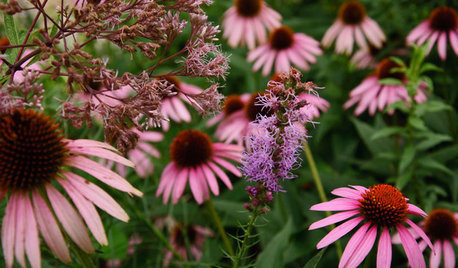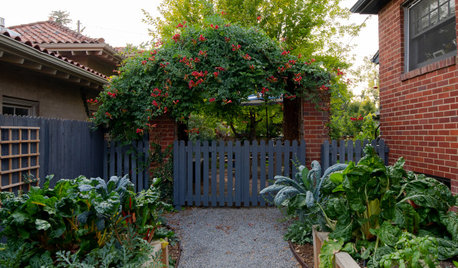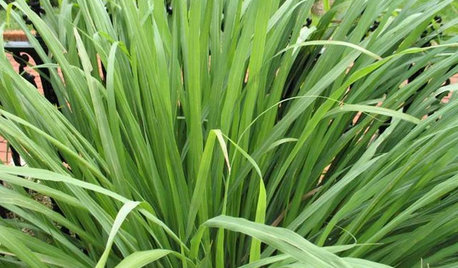adding green peppers and onions to spaghetti sauce
dillydee8930
14 years ago
Related Stories

LIFEKitchen Traditions: Tomato Season Meets a Family Legacy
Somewhere a Sicilian great-great-grandmother is smiling at a bowl of American-made sauce
Full Story
GARDENING GUIDESGreat Lakes Gardener's August Checklist
Pick the peppers and drink in the scent of lilies this month, while you mull over a mowing strip to make fall gardening easier
Full Story
GARDENING GUIDES10 Easy Edibles for First-Time Gardeners
Focus on these beginner-friendly vegetables, herbs, beans and salad greens to start a home farm with little fuss
Full Story
GARDENING GUIDES12 Edibles Perfect to Plant in Late Summer
Keep those homegrown vegetables and greens coming well into fall
Full Story
LIFE10 Beautifully Simple Ways to Go Greener in the New Year
You may just find more green in your wallet along the way
Full Story
MOST POPULARHow to Start a Cool-Season Vegetable Garden
Late summer and late winter are good times to plan and plant cool-season crops like salad greens, spinach, beets, carrots and peas
Full Story
EDIBLE GARDENSSummer Crops: How to Grow Tomatoes
Plant tomato seedlings in spring for one of the best tastes of summer, fresh from your backyard
Full Story
GARDENING AND LANDSCAPINGWorld of Design: 10 Home Gardeners Show Us Their Sweet Summer Harvests
From New York to Tokyo, these gardeners have turned their yards, terraces and rooftops into places of bounty
Full Story
HERBSHerb Garden Essentials: Grow Your Own Zesty Lemongrass
Add lemony goodness to cooking and tropical flavor to your yard with this grass-like herb native to Southeast Asia
Full Story
FEEL-GOOD HOME21 Ways to Waste Less at Home
Whether it's herbs rotting in the fridge or clothes that never get worn, most of us waste too much. Here are ways to make a change
Full StoryMore Discussions






ksrogers
digdirt2
Related Professionals
Norfolk Landscape Architects & Landscape Designers · Danbury Landscape Architects & Landscape Designers · Carson Landscape Architects & Landscape Designers · Rancho Palos Verdes Landscape Architects & Landscape Designers · Aurora Landscape Contractors · Surprise Landscape Contractors · La Mirada Landscape Contractors · La Verne Landscape Contractors · Plantation Landscape Contractors · The Villages Landscape Contractors · Albuquerque Roofing & Gutters · Woodstock Roofing & Gutters · Coronado Roofing & Gutters · Black Forest Roofing & Gutters · Escondido Driveway Installation & MaintenanceLinda_Lou
gardener1908
david52 Zone 6
valereee
medcave
david52 Zone 6
ksrogers
ccaggiano
digdirt2
gardener1908
david52 Zone 6
Linda_Lou
digdirt2
dillydee8930Original Author
david52 Zone 6
joe-il
david52 Zone 6
digdirt2
david52 Zone 6
Linda_Lou
caavonldy
david52 Zone 6
david52 Zone 6
digdirt2
wcthomas
grenslvs
digdirt2
grenslvs
digdirt2
grenslvs
digdirt2
grenslvs
digdirt2
grenslvs
tralareja
theforgottenone1013 (SE MI zone 5b/6a)